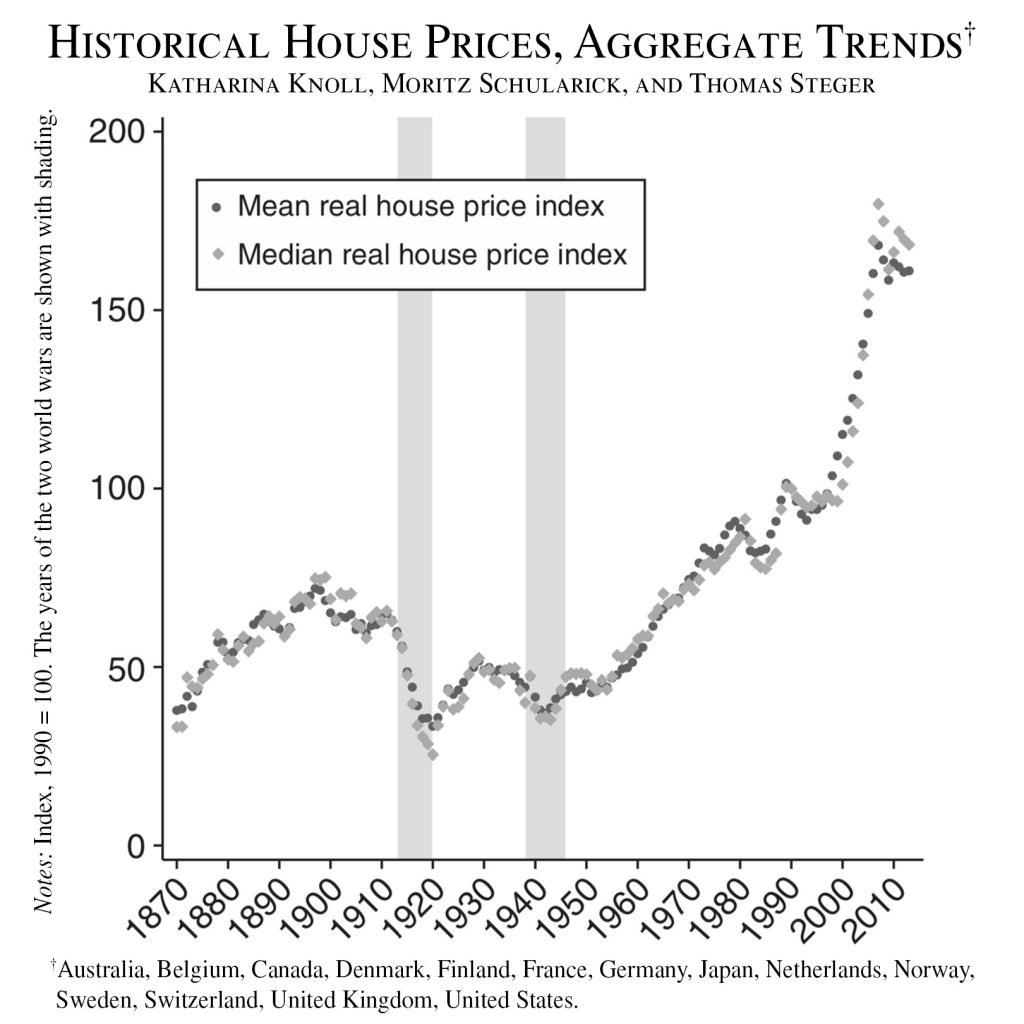Market
Simon Denny Is Selling an Intentionally Lackluster NFT to Benefit Institutions Crypto Collectors Typically Don’t Care About
Denny says his "perverse" gesture is about reinserting wealth into systems outside of which it was made.

Denny says his "perverse" gesture is about reinserting wealth into systems outside of which it was made.

Kate Brown

Artist Simon Denny has created an NFT to benefit the city of Basel’s environmental government body and the Kunsthalle Basel, which plans to sell the work during Art Basel.
Unlike many flashy NFTS, Denny’s image is of a simple static graph made in collaboration with economist Moritz Schularick, the co-author of a major research project tracking housing prices around the world from 1870 to 2012.
Denny’s work is a two-toned chart showing a steady rise in housing prices through the Great Depression, two world wars, the Post-war capitalist boom era, and into today.
“The rise of crypto has meant (and I think will continue to mean more and more in the future) a challenge to existing monetary systems,” Denny told Artnet News.
“Crypto is a threat to government’s control of the economies they preside over, and therefore to power… I thought it would be an interesting—if a little perverse—of a gesture to return some of the wealth that is being created outside of the state-issued money system back to the state—and not just any state, but the state that legally allowed the first parts of that bridge to this other financial system to happen.”

Simon Denny, Economist Chart NFT (with Moritz Schularick, Historical House Prices, Aggregate Trends), 2021. Courtesy the artist and Kunsthalle Basel.
The concept for the sale came during preparatory conversations for Kunsthalle Basel’s current group show, “Information (Today),” which includes works by Trevor Paglen, American Artist, and Sondra Perry (through October 10).
The show revisits MoMA’s landmark 1970 exhibition “Information,” which looked at how the dawn of the information age, brought on in part by mainframe computers, led to new kinds of artistic practices, including Hans Haacke’s and Adrian Piper’s research-based work.
For Kunsthalle Basel, director Elena Filipovic organized a show looking at how contemporary artists have dealt with latter-day manifestations of the same phenomenon.
“Whether or not one is interested in NFTs generally, one should nevertheless look closely at how Denny uses the medium to turn it into a conceptual artwork,” Filipovic told Artnet News. “I’m one of those people not generally interested in the phenomenon of NFTs, but I am immensely interested in what Denny is doing with them.”
Denny has a long history integrating blockchain technology into his work. In 2018, he co-curated an exhibition dedicated to cryptocurrencies at Berlin’s Schinkel Pavilion. The exhibition included a presentation of the first CryptoKitty ever sold.
The Kunsthalle Basel is not the first cultural institution to sell an NFT as a fundraising device, but most other institutions have treated them more as merchandise than as artworks.